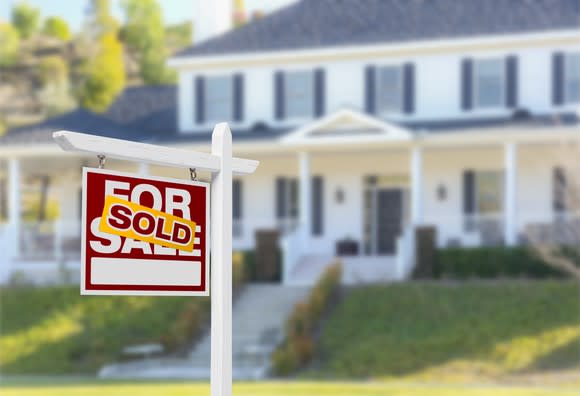The New U.S. Housing Crisis Is About More Than a Lack of New Construction
While many people still think that the last housing crisis in the United States was largely due to banks offering too many subprime mortgages, it's now clear that wasn't actually the case. Instead, recent research pins the blame on house flippers and speculators, who pumped markets up, then defaulted in large numbers when they were unable to turn a profit on their investment properties.
Now, however, a different set of circumstances entirely looks poised cause a different type of housing crisis.
Since the real estate market crash took the wind out of the construction boom of the 2000s, fewer homes are being built per U.S. household than at nearly any time in history, according to the Federal Reserve Bank of Kansas City. That's partly due to builders being nervous about returning to previous levels of construction, fearful that another crash could come. It's also due in part to the fact that some construction companies shifted from building low and mid-priced housing to higher-end, higher-margin homes.
The resulting lack of new supply is widely blamed for the current shortage of houses on the market. In reality, while that's a piece of the puzzle, it's not the only factor. The other fundamental issue is that homeowners simply aren't selling.

There has been a shortage of houses for sale across the United States. Image source: Getty Images.
America is not moving
The vast majority of U.S. homeowners (79%) say they have no plans to move within the next five years, according to a new Bankrate.com report. More than 6 out of 10 homeowners (62%) say they never plan to move.
In some ways, that lack of available properties on the market only feeds this problem. People can't move if there's nothing for sale. Still, that 62% who feel they've settled permanently into their homes are a big chunk of the population who aren't considering downsizing to a rental, switching to a senior living arrangement, or otherwise moving out of their home ownership situation.
"Americans are essentially staying put in their homes for the foreseeable future, either by choice, or by necessity or some combination," said Bankrate.com senior economic analyst Mark Hamrick in a press release. "Because of this, prospective homebuyers are finding a real lack of quality, affordable inventory, which can lead to bidding wars and risky overspending."
What does this mean for home buyers?
A stagnant construction market with limited resales pushes prices upward for whatever homes do come on the market. That's great for sellers looking to exit home ownership, but it's bad for buyers looking to enter the market. Couple that with the presence of speculators and flippers in the market, and you have a recipe for another housing crisis.
At this point, in many markets across the country, the only way to buy a home is to overpay. That's not too terrible if the economy stays strong and your wages rise. If, however, the economy slows, or your personal situation gets worse, or wages stagnate, committing too much of your household income to a mortgage can lead to you defaulting.
What should you do?
The simple answer to this puzzle is to only buy a house you can comfortably afford. That may mean getting less than you want, or waiting until the market changes or your finances improve.
For some people, that means not buying yet. It may be a bitter pill to swallow, but it makes more sense than risking your financial future by over-leveraging yourself. If you can't afford the kind of home you want, bide your time, and save your money. Being able to put down a large cash deposit puts you in a stronger position with sellers, and might help you win a bidding war.
Before buying a home, make a realistic budget that considers the 28/36 rule: No more than 28% of your gross monthly income should go to housing expenses, and no more than 36% of your total should be spent on all debt.
It's not a hard and fast rule, but it is a solid guideline that many lenders use, and it makes sense for home buyers to adhere to it even if banks are willing to be more flexible about how big a loan they'll give you. Renting or even living with family members may not be among your first choice plans, but if one of those moves allows you to save up for when the right house at the right price comes along, that short-term pain will serve your long-term goals.
More From The Motley Fool
The Motley Fool has a disclosure policy.

 Yahoo Finance
Yahoo Finance 